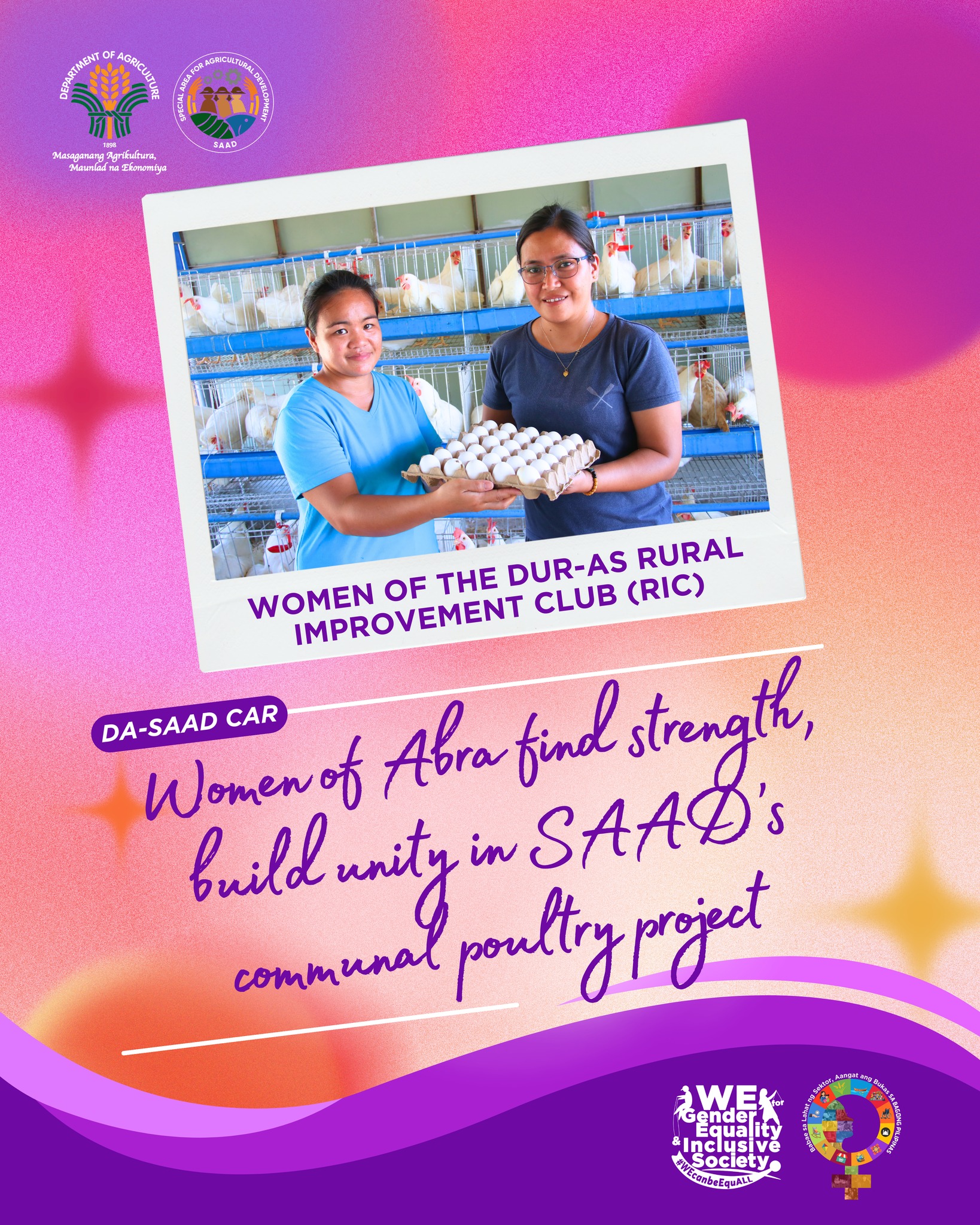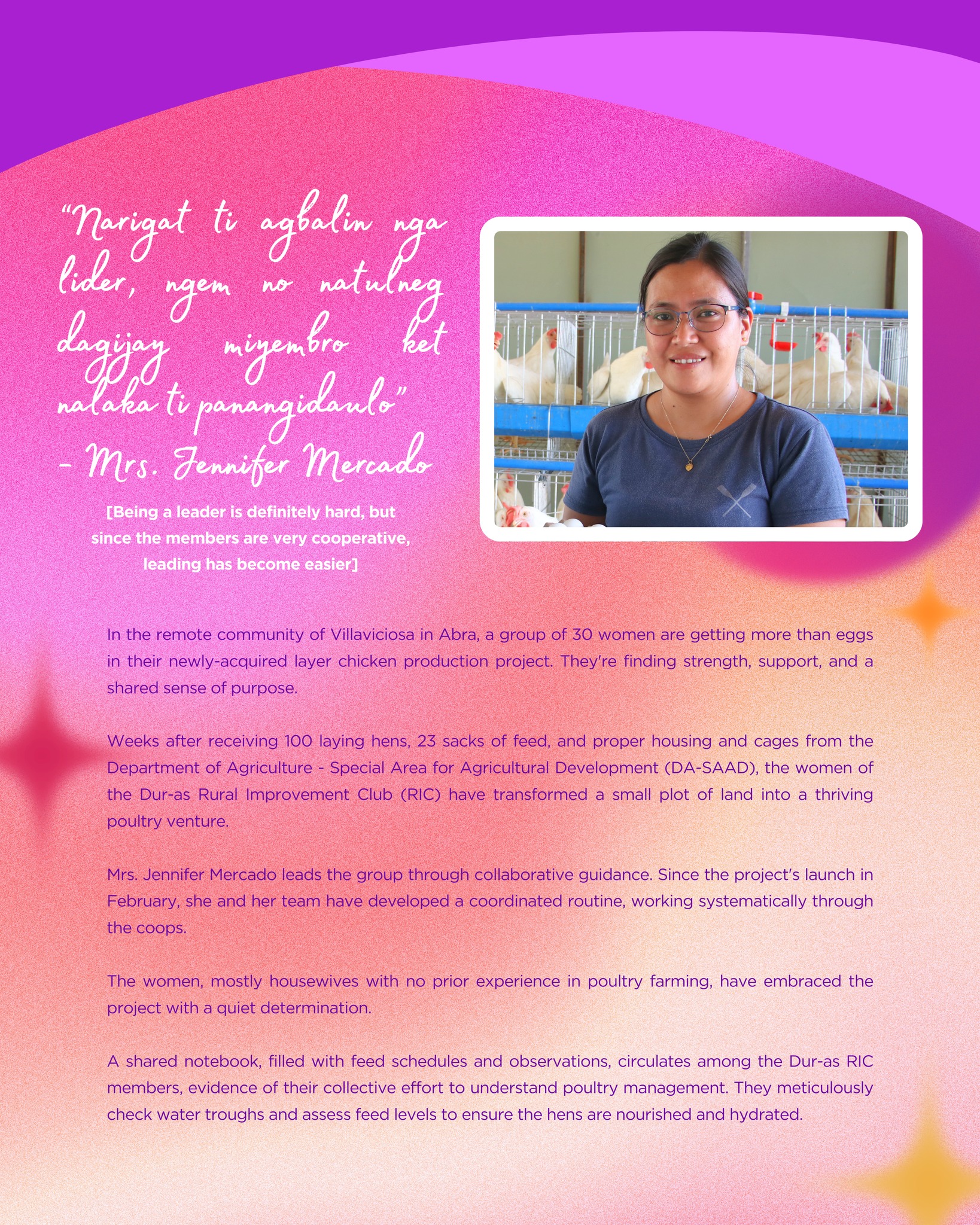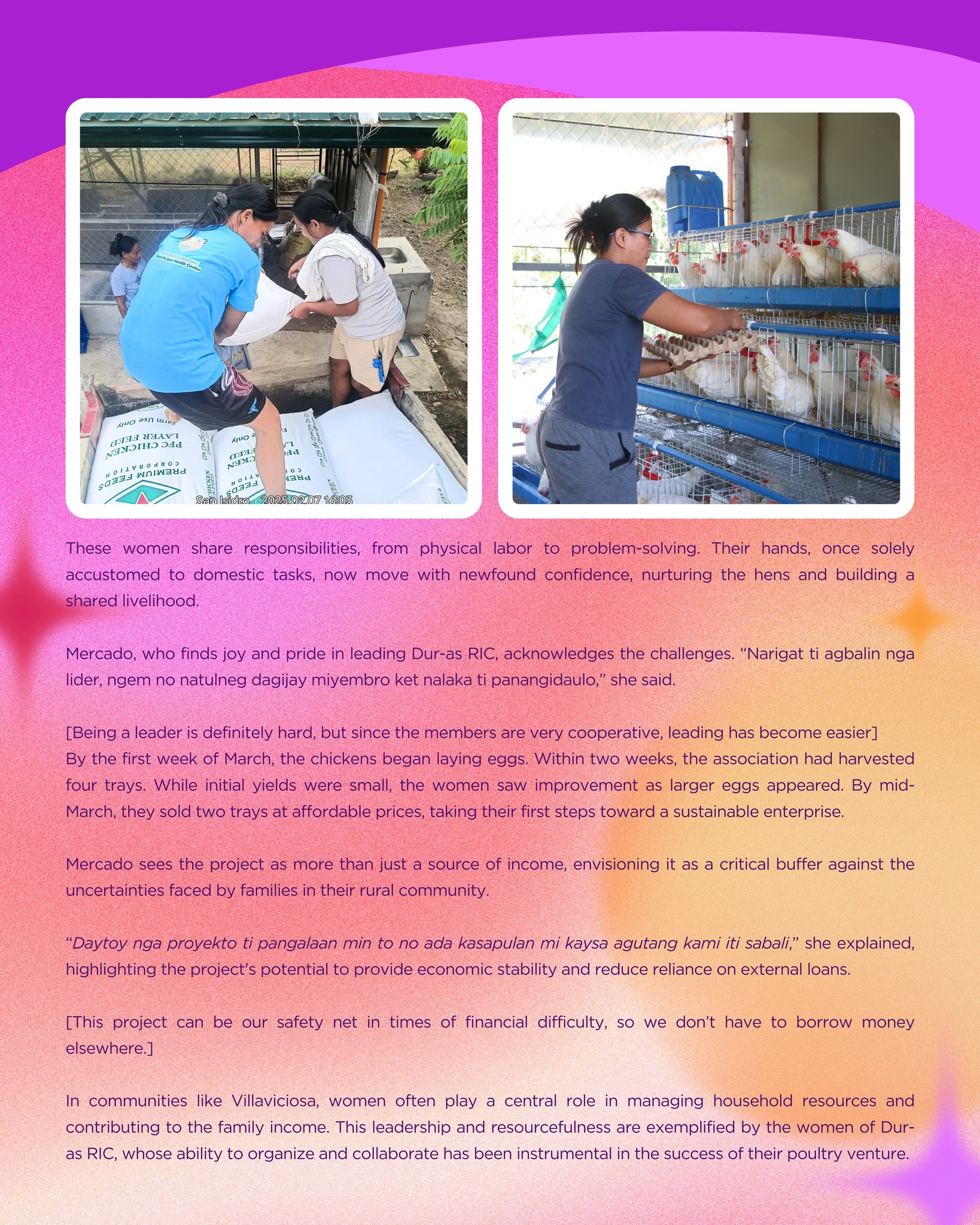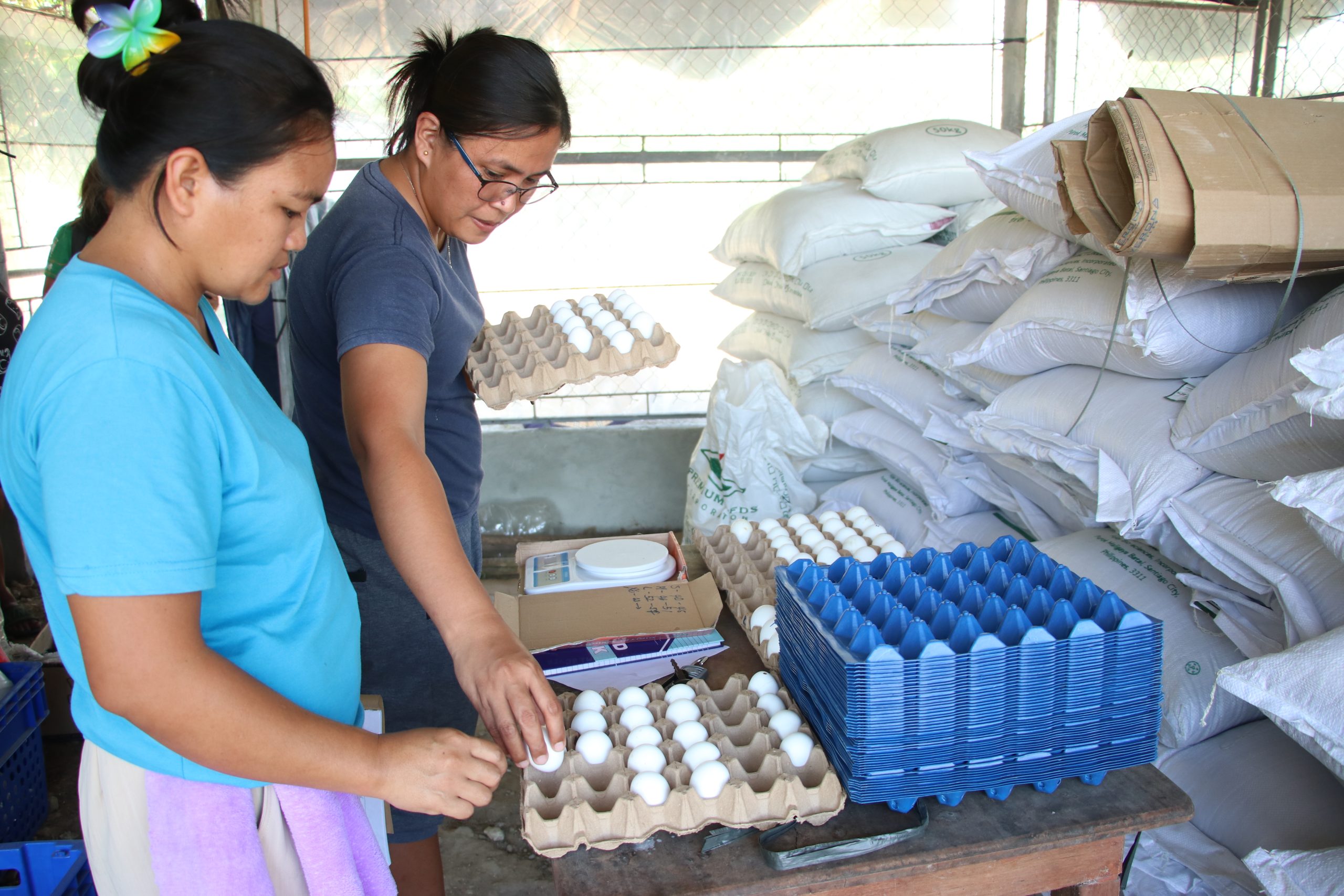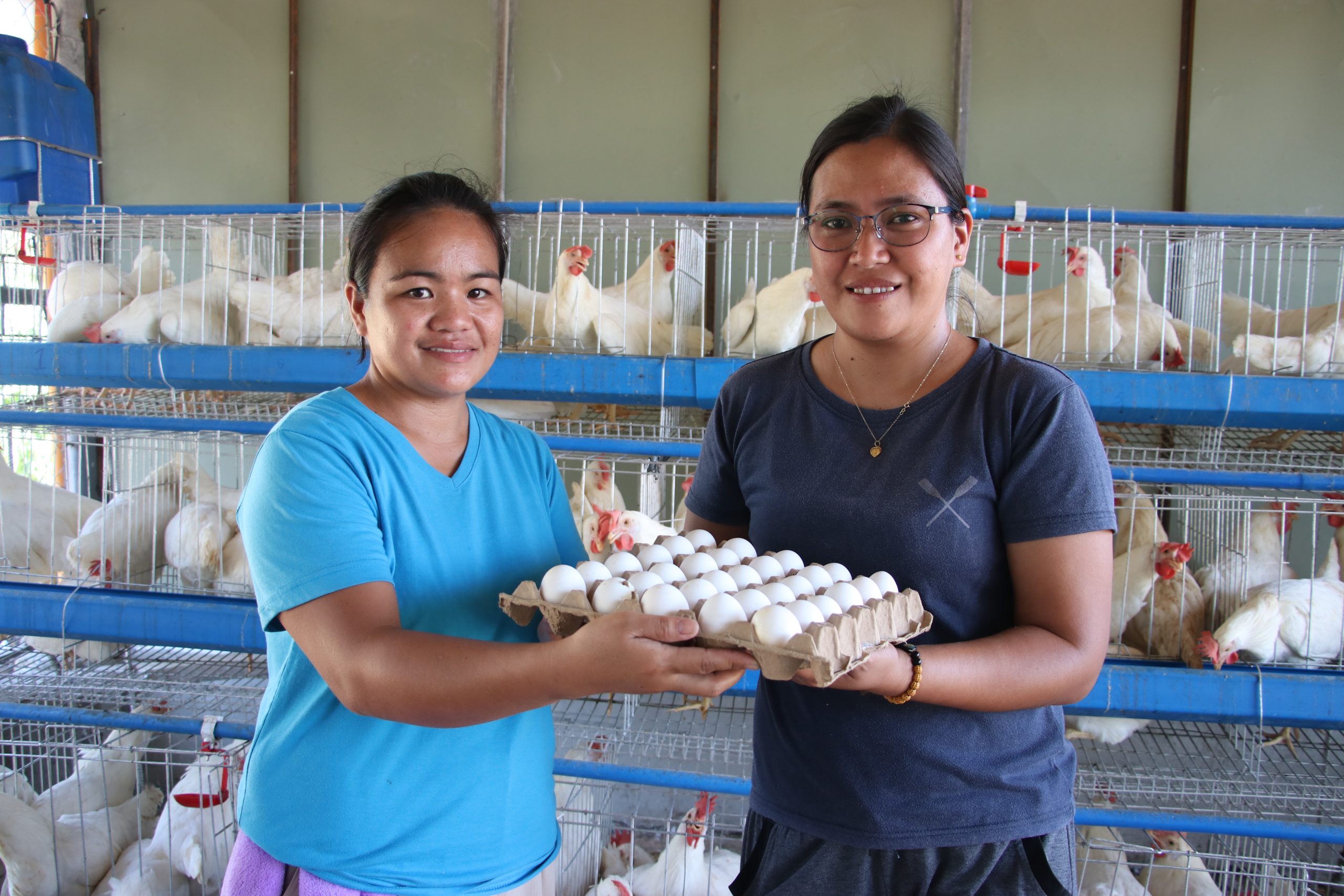In the remote community of Villaviciosa in Abra, a group of 30 women are getting more than eggs in their newly-acquired layer chicken production project. They’re finding strength, support, and a shared sense of purpose.
Weeks after receiving 100 laying hens, 23 sacks of feed, and proper housing and cages from the Department of Agriculture – Special Area for Agricultural Development (DA-SAAD), the women of the Dur-as Rural Improvement Club (RIC) have transformed a small plot of land into a thriving poultry venture.
Mrs. Jennifer Mercado leads the group through collaborative guidance. Since the project’s launch in February, she and her team have developed a coordinated routine, working systematically through the coops.
The women, mostly housewives with no prior experience in poultry farming, have embraced the project with a quiet determination.
A shared notebook, filled with feed schedules and observations, circulates among the Dur-as RIC members, evidence of their collective effort to understand poultry management. They meticulously check water troughs and assess feed levels to ensure the hens are nourished and hydrated.
These women share responsibilities, from physical labor to problem-solving. Their hands, once solely accustomed to domestic tasks, now move with newfound confidence, nurturing the hens and building a shared livelihood.
Mercado, who finds joy and pride in leading Dur-as RIC, acknowledges the challenges. “Narigat ti agbalin nga lider, ngem no natulneg dagijay miyembro ket nalaka ti panangidaulo,” she said.
[Being a leader is definitely hard, but since the members are very cooperative, leading has become easier]
By the first week of March, the chickens began laying eggs. Within two weeks, the association had harvested four trays. While initial yields were small, the women saw improvement as larger eggs appeared. By mid-March, they sold two trays at affordable prices, taking their first steps toward a sustainable enterprise.
Mercado sees the project as more than just a source of income, envisioning it as a critical buffer against the uncertainties faced by families in their rural community.
“Daytoy nga proyekto ti pangalaan min to no ada kasapulan mi kaysa agutang kami iti sabali,” she explained, highlighting the project’s potential to provide economic stability and reduce reliance on external loans.
[This project can be our safety net in times of financial difficulty, so we don’t have to borrow money elsewhere.]
In communities like Villaviciosa, women often play a central role in managing household resources and contributing to the family income. This leadership and resourcefulness are exemplified by the women of Dur-as RIC, whose ability to organize and collaborate has been instrumental in the success of their poultry venture. ###
